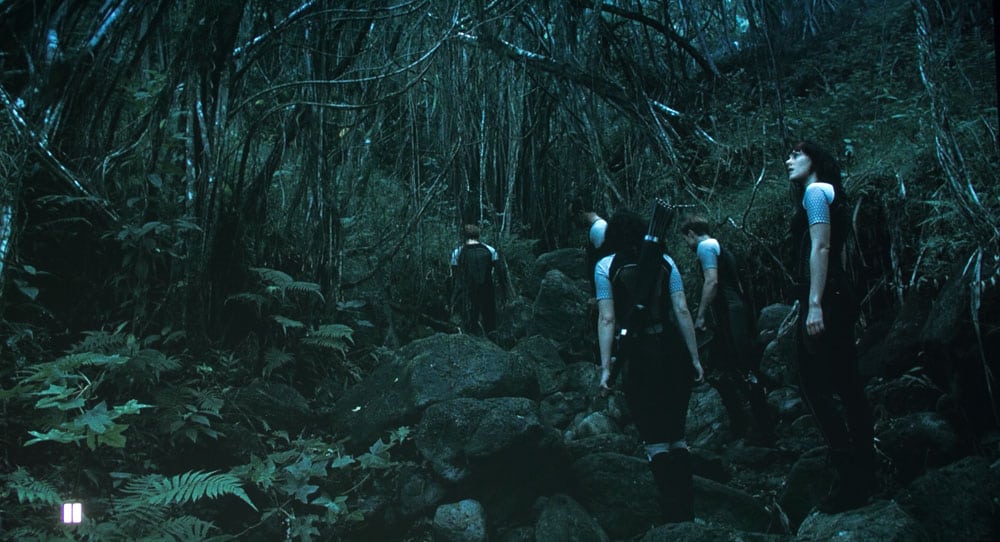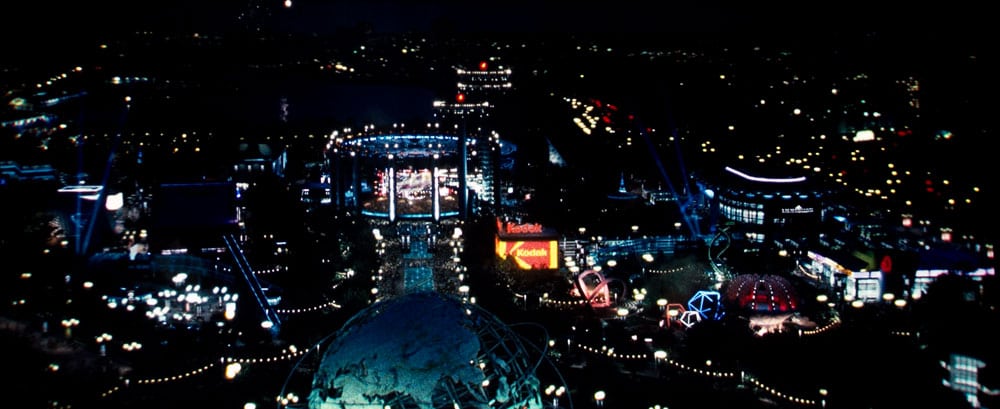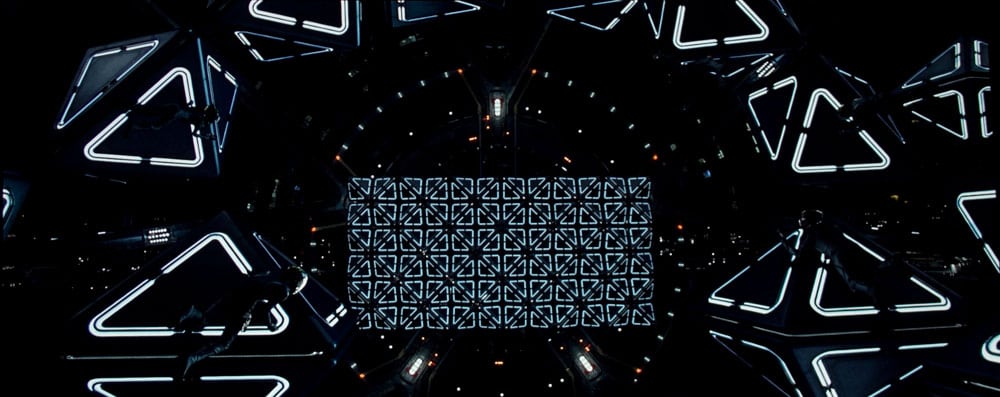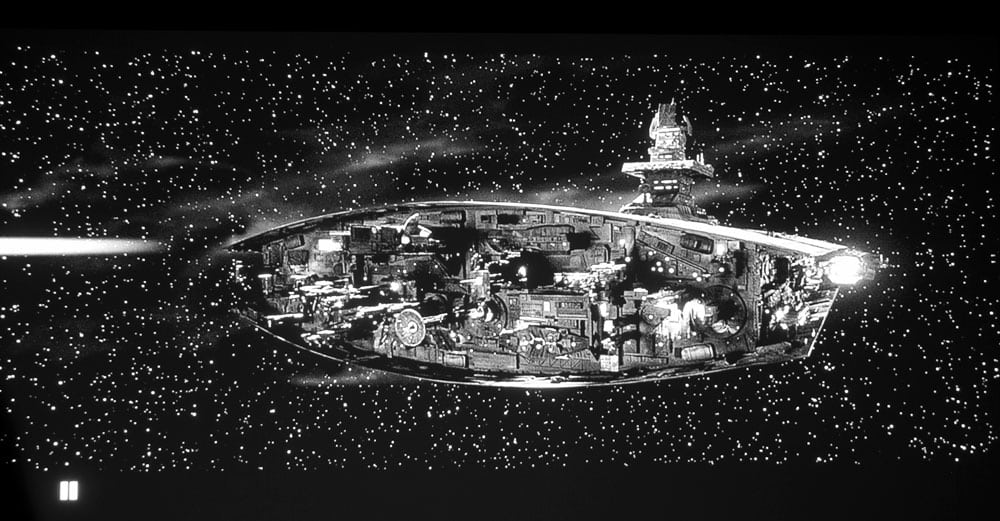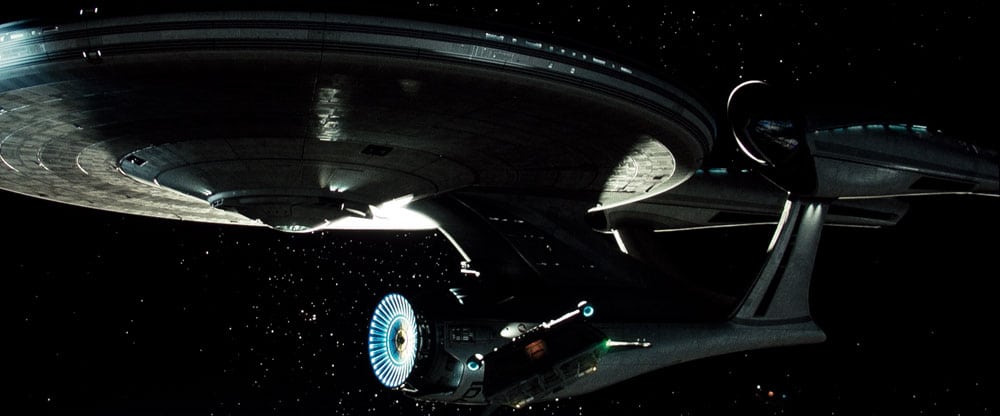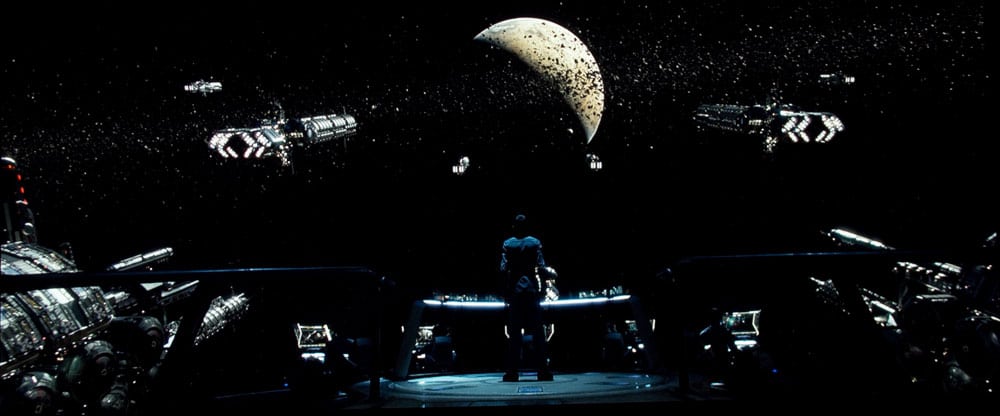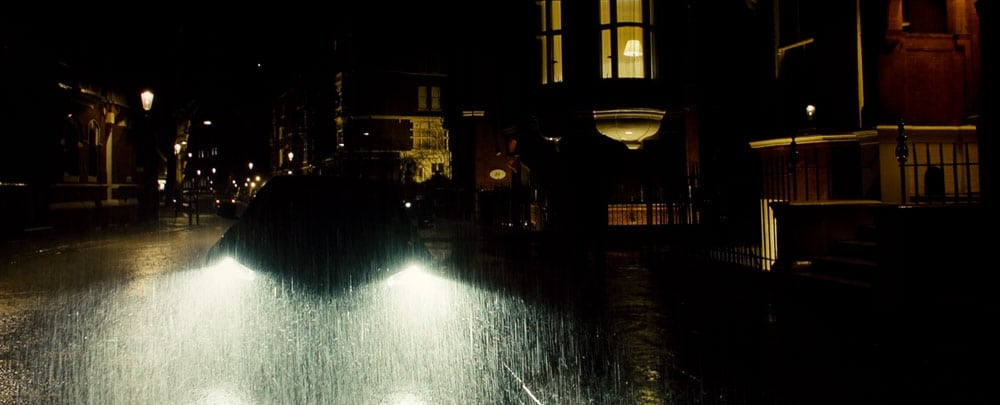HD91 Black Level Performance
As I've already discussed Optoma's Dynamic Black, which in this case is a lamp (or LED light source) dimming method, in the special features section, I'll try not to be too repetitive.
Overall black level performance of the HD91 is borderline what I call "ultra high contrast" when one of the three Dynamic Black modes are engaged On the right scenes it can do a very respectable job, as seen in a couple of these images.
There are two issues though. First, as previously mentioned, the dynamic aspects of Dynamic Black are far too visible. Dynamic Black even causes very visible changes on medium bright scenes, where most dynamic irises intentionally are designed to minimize visibility.
On the classic dark scenes we look at, including the Casino Royale (Bond) night train scene, a dark scene from Hunger Games Catching Fire), and the starship in Fifth Element, blacks aren't bad, but not up to most of the competition found on over $2000 projectors. Our favorite projectors around the price, BenQ's W7500 (also a DLP projector, and the one closest in black level performance), Epson's 5030UB/6030UB, Sony's VPL-HW55ES and JVC's X35, all are capable of from slightly to dramatically better. If you turn off Dynamic Black completely, then the HD91 in those same scenes seems more typical of under $2000 projectors, which at its price point, is not exactly a "good thing!"
Why consider turning Dynamic Black off? Because it is often visible, it can be a distraction. Everyone is somewhat different - for example; I rarely find audible projector noise to be a serious issue, but it is a big thing for some. But most of us agree that black levels are a key performance issue. I've recommended not using Dynamic Black in reviews of some other Optoma projectors in the past. In the case of the HD91, I think that's a viable idea as well, at least for movies of certain types. After much playing, Dynamic Black 1, which does the least, is the one I would normally use though, but even that setting can be noticeable on some scenes. There are some illustrative photos in Dynamic Black section in this review. The kids and other non-enthusiasts probably won't notice, but then, many of those are happy watching movies on 5 inch smartphone screens. Go figure.
In the images here, all are typical dark scenes, but no two are particularly similar. All of these exposures but the side by side and regular Bond night train scene are normally exposed so blacks are going to look pretty black, but on those last two, we've dramatically overexposed so you can get a feel for how black those blacks get.
In our side by sides, the HD91's on the left. The other projector is the Epson Home Cinema 5030UB - the UB's being the best blacks per dollar of projector for a number of years now. As you can see, the differences are rather dramatic. Also of note, the Epson in the side by side is in it's calibrated mode, with lamp on Normal - which is their less bright eco mode in this case. The Optoma is at full "lamp" power. Even so, the Epson projector still produces the brighter image. You'll need to take that brightness difference in consideration when comparing the blacks. Note that the HD91 projector had Dynamic Black set to 3, the one that most reduces the overall and black levels.
Even in Dynamic Black 3, and with the Epson being brighter overall, you can see in the letterbox areas and in the darkest parts of the woods, that the Epson's blacks are easily much darker.
On my computer colorimeter, for example, the dark areas are coming up as value 11-18 on the Epson vs. 23-33 on the HD91, a big difference. And remember that near mid bright white areas on the HD91 are ok often as low as 170, while the same areas on the Epson because the image is brighter, are crushed at 255.
And you can appreciate that just by looking at this side by side train image. On the Starship image the differences are even more noticeable and rather dramatic, the HD91 does reasonably well, but the letterbox and the background of space are significantly blacker, giving the image more pop. The JVC and Sony competition would prove similar compared to the HD91.
Note that one can also use the LED Brightness section to dim the maximum brightness. But on this projector there really aren't any lumens to spare, otherwise I would have checked to see if limiting the maximum brightness would have made the Dynamic Black action less noticeable.

